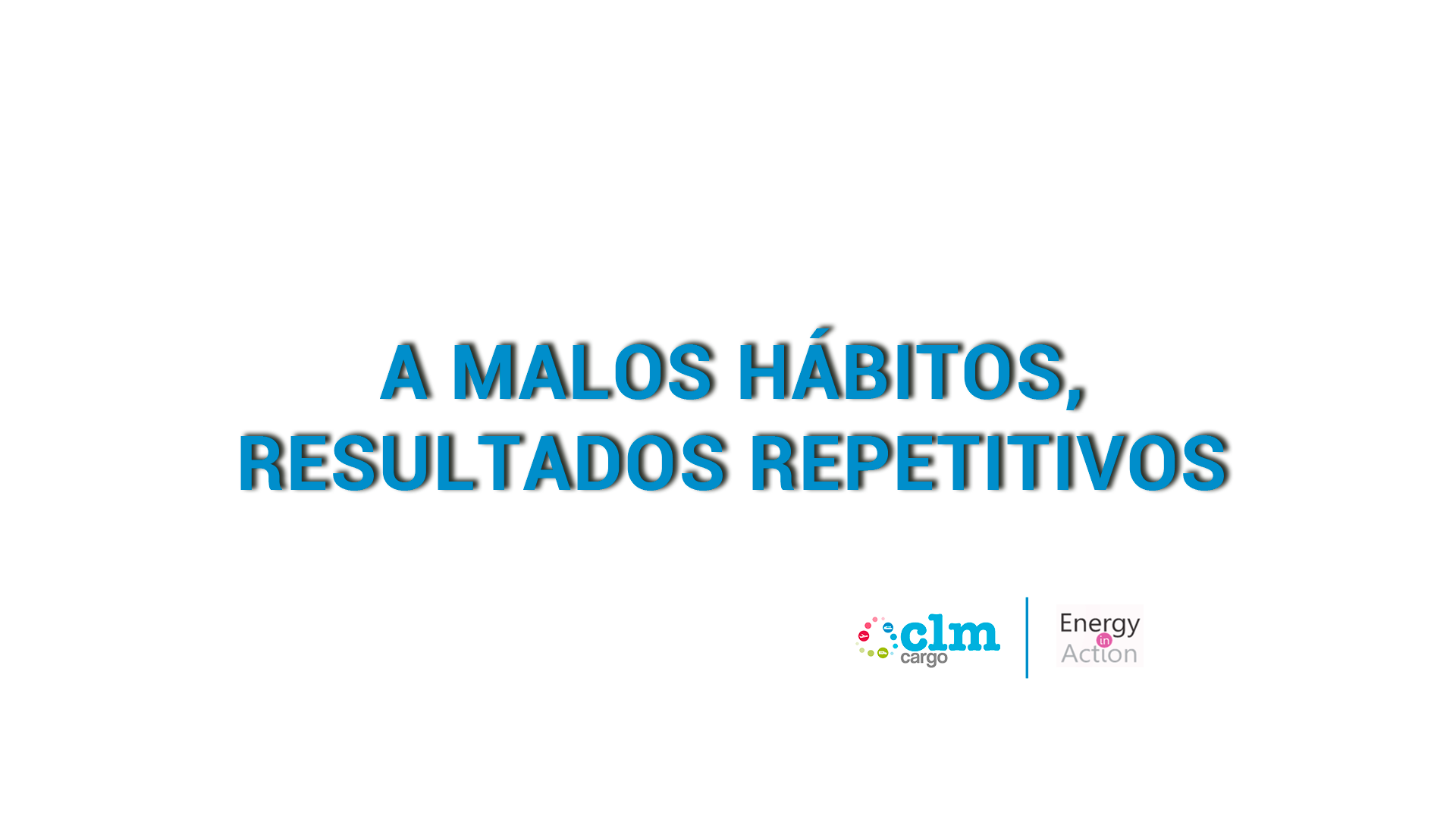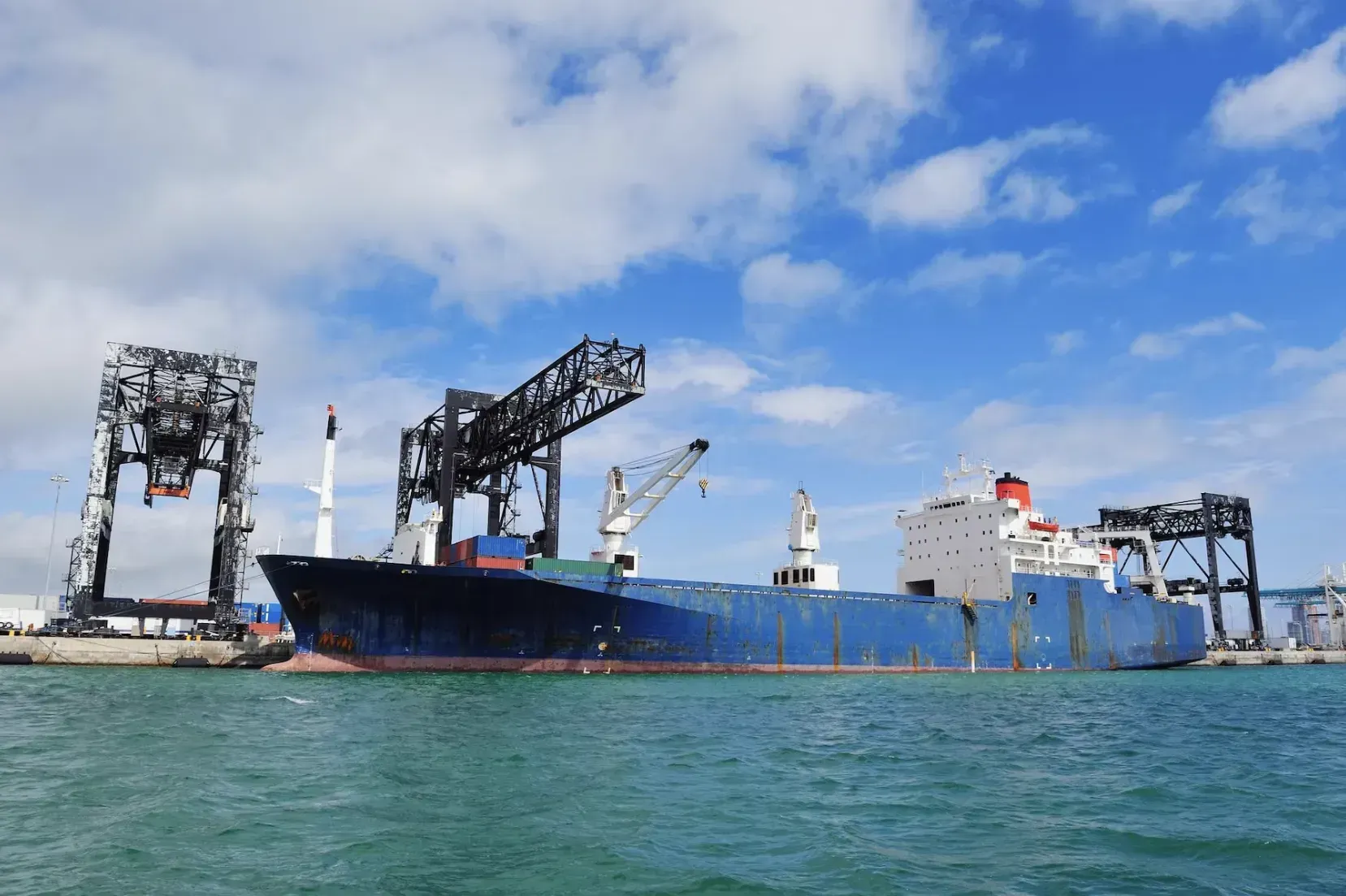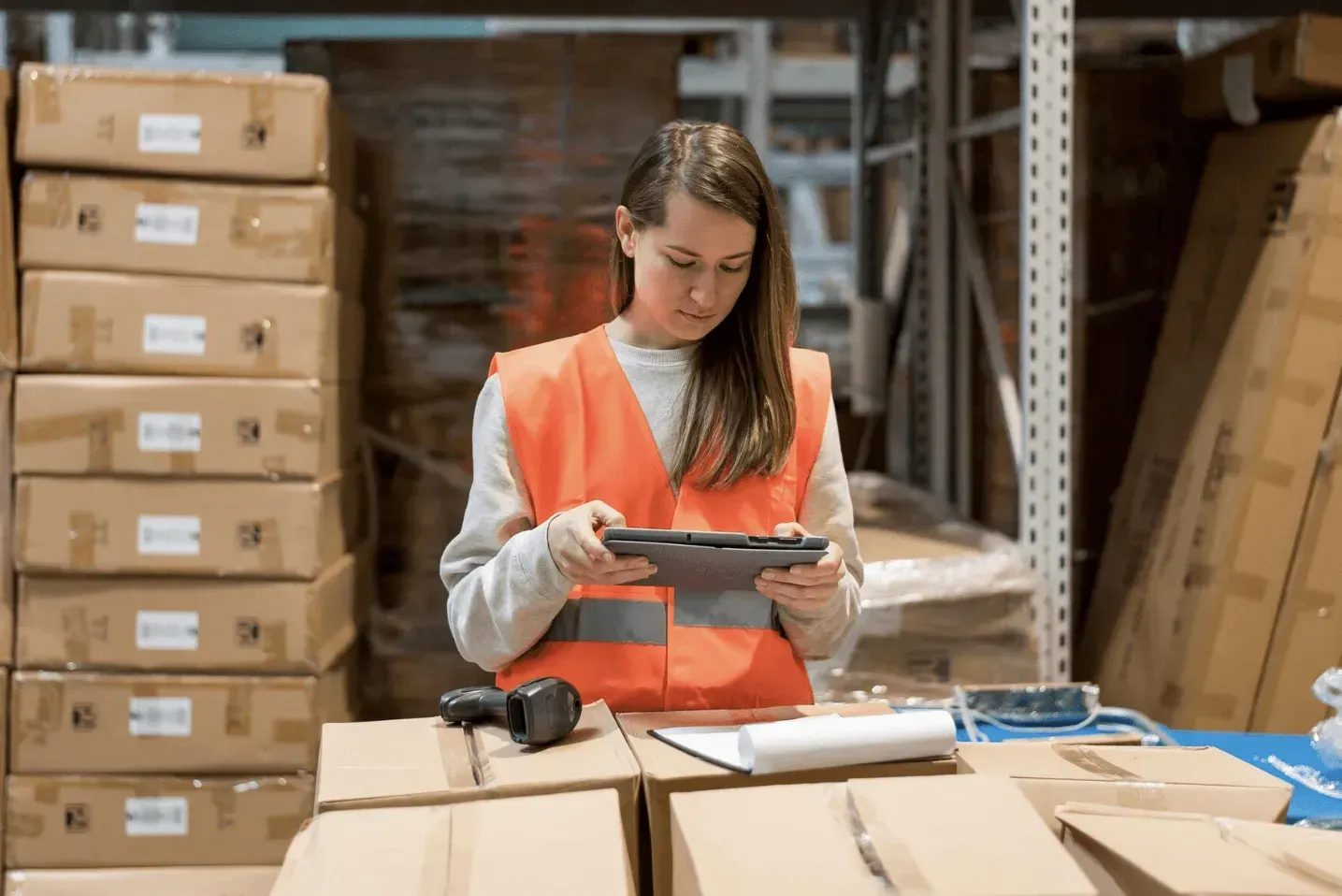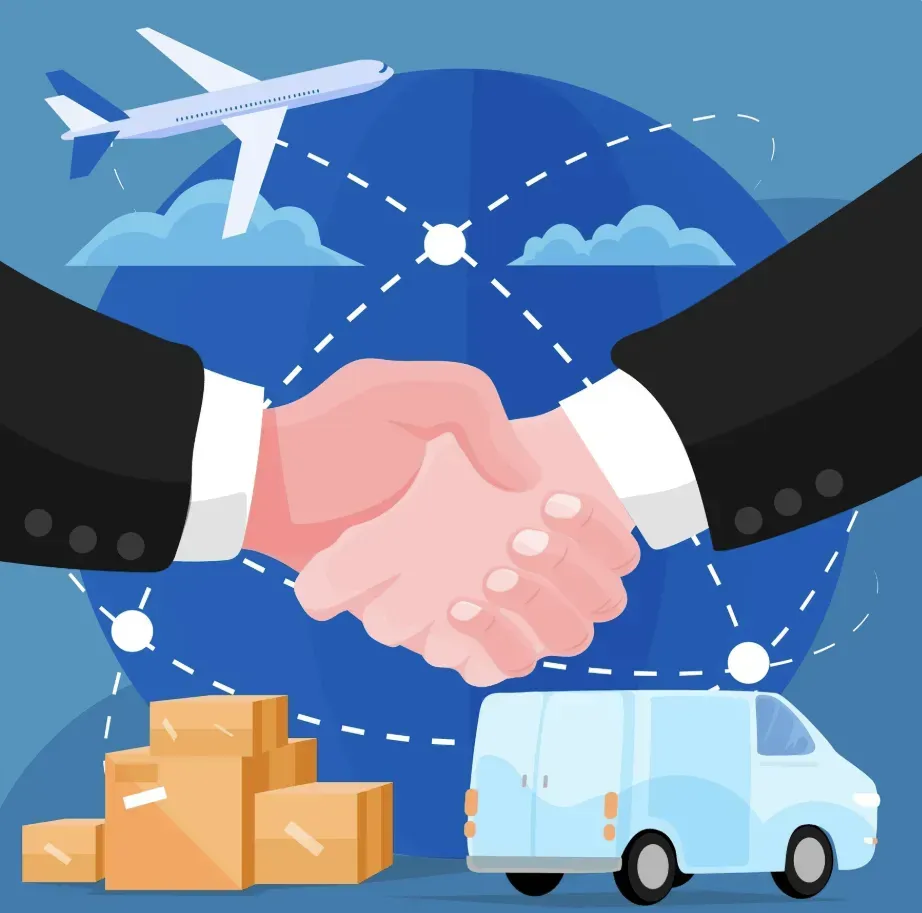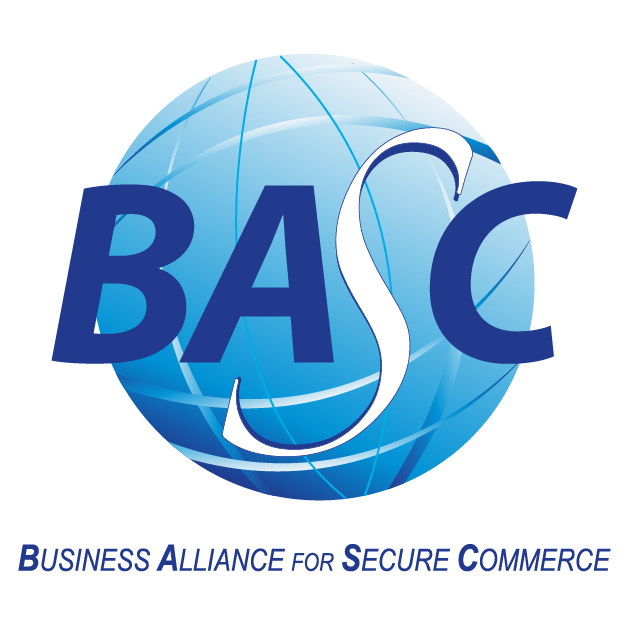Export logistics in Colombia

Export logistics in Colombia is essential for the country’s economic development. Its strategic location and product diversity allow local companies to access international markets competitively. Understanding logistical processes—from production to transportation—is crucial for export success. CLMCargo supports companies at every stage, streamlining management and optimizing resources in a dynamic global environment.
Context of Export Logistics in Colombia
Export logistics in Colombia plays a key role in the country’s international trade. Thanks to its geographical position, Colombia has developed various strategies to strengthen its global market participation.
Importance of Strategic Location
Colombia is strategically located between North and South America, granting access to commercial routes that connect with major global markets. Its proximity to both the Atlantic and Pacific Oceans facilitates maritime transport, which is crucial for exports. Major port cities such as Cartagena, Santa Marta, and Buenaventura play a vital role in export logistics, providing effective access to foreign markets.
This geographic advantage also enhances the export potential of agricultural, mining, and manufactured products that are competitive globally. As a result, Colombia has the opportunity to become a logistics hub, improving the flow of goods and services to and from other countries. Without a doubt, Colombia’s strategic location is a significant asset that businesses can leverage.
Impact on the Colombian Economy
The development of export logistics has directly impacted Colombia’s economy. As exports increase, new jobs are created and investment in logistics infrastructure grows. Sectors like agribusiness, textiles, and manufacturing have expanded thanks to effective logistics management, boosting international competitiveness.
Free trade agreements have also played a major role in expanding Colombia’s exports by giving exporters access to global markets under favorable conditions and reducing tariff barriers. Integration into the global economy fosters product diversification and contributes to stable, sustainable growth.
However, logistical challenges persist. Improving infrastructure and services remains a priority to maximize Colombia’s export potential. Investments in technology, training, and process modernization are essential to ensure the country maintains and expands its share in global trade.
Components of the Export Logistics Chain
The export logistics chain consists of several essential components that enable Colombian products to reach international markets efficiently. From production to transport, each element plays a key role in export success.
Product Production and Preparation
The production and preparation phases ensure that goods meet the necessary specifications for the destination markets.
Compliance with Quality Standards
To be exportable, products must meet the quality standards required by the destination country and international organizations. This involves implementing quality control processes that ensure the final product meets expectations.
Companies must conduct testing and obtain certifications to demonstrate product quality, which may include lab analyses and audits by competent authorities.
Product Tariff Classification
Determining the correct tariff classification is also crucial. Each product is assigned a tariff code that defines applicable taxes and regulations. Knowing the tariff subheading helps companies calculate associated costs, such as customs duties and import restrictions, facilitating market access.
Exporter Registration
To engage in export activities, companies must be legally registered as exporters. This registration is a key requirement in the logistics process.
Requirements for the Tax Identification Number (RUT)
The Registro Único Tributario (RUT) is essential for official recognition as an exporter by DIAN and other entities. To obtain it, companies must provide detailed information about their business activities. This registration is indispensable for handling customs and tax procedures required for exporting goods.
Target Market Identification
Analyzing the target market is essential for designing effective export strategies and adapting product offerings to international consumer needs.
Market Research
Market research helps businesses understand the preferences and context of consumers in the destination country. This includes data on trends, competition, and product acceptance. A thorough analysis supports informed decision-making and reduces the risks associated with entering new markets.
Characteristics and Expectations of the Destination Market
Understanding the destination market involves knowing cultural, economic, and social elements that influence product acceptance. Consumer expectations regarding quality, pricing, and service must also be considered. Adapting your offer to these factors is key to achieving successful market entry.
Required Permits and Certifications
To execute a successful export process in Colombia, it is essential to comply with various permits and certifications that ensure products meet both national and international regulations. These requirements are critical to guarantee the safety and quality of exported goods.
Colombian Agricultural Institute (ICA)
The Instituto Colombiano Agropecuario (ICA) is responsible for regulating and supervising agricultural health standards in Colombia. Its main function is to ensure that agricultural and livestock exports comply with international market requirements.
To export such products, companies must obtain a sanitary permit, certifying that goods are free from pests and diseases. This permit is particularly important for fresh goods like fruits and vegetables, which are highly susceptible to contamination.

Requirements to Obtain ICA Export Permits
- Submit a sanitary permit request to the ICA (Colombian Agricultural Institute).
- Complete the product registration declaration process with ICA.
- Provide detailed information about the production and handling of the export goods.
- Ensure that products are inspected and labeled according to current regulations.
National Institute for the Surveillance of Medicines and Food (INVIMA)
INVIMA is responsible for ensuring that food and pharmaceutical products meet the necessary quality and safety standards for export. This institution plays a crucial role in protecting public health and regulating these products abroad. Exporters of food and medicine must obtain a sanitary registration, which is mandatory for access to international markets.
Requirements to Obtain INVIMA Sanitary Registration
- Register the company and products with INVIMA via formal application.
- Submit technical studies demonstrating the quality and safety of the export products.
- Conduct laboratory testing and analysis to certify the sanitary characteristics of the product.
- Ensure product labeling complies with the regulations of the destination countries.
Preparing Goods for Export
Proper preparation of goods is critical to ensure they arrive in optimal condition. Key areas to consider include:
Trade Terms (INCOTERMS)
INCOTERMS are standardized terms that define the responsibilities and obligations of sellers and buyers in international trade. Understanding and applying them correctly helps avoid misunderstandings during delivery and transportation.
- FOB (Free On Board): The seller is responsible until the goods are on board the ship. Risk and cost then transfer to the buyer.
- CIF (Cost, Insurance and Freight): The seller covers costs, insurance, and freight to the destination port. Risk transfers once the goods are shipped.
- DDP (Delivered Duty Paid): The seller is responsible for all costs, including taxes and duties, until delivery to the final destination.
Modes of Transport (Air, Sea, Land)
The choice of transportation method is essential for ensuring efficient and secure delivery. Each mode has advantages and disadvantages based on the product type and urgency.
- Air freight: Best for time-sensitive or high-value products. Although more expensive, it ensures faster delivery.
- Maritime shipping: More economical for large volumes, though with longer transit times. Ideal for non-perishable and lower-cost goods.
- Land transport: Common for domestic distribution or connections between ports and airports. Offers route flexibility and relatively fast delivery.
Proper Packaging and Labeling
Packaging and labeling are vital for protecting goods and ensuring regulatory compliance in destination markets.
- Packaging type: Should be selected based on product characteristics. Use strong materials and proper techniques, especially for fragile or heavy items.
- Labeling: Labels must clearly state the contents, country of origin, handling instructions, and specific warnings when applicable.
- Regulations: Labeling must comply with the rules of the destination country, which may include specific languages, symbols, and product data.
Customs Management and Documentation
Effective customs management and documentation are essential for export compliance. This process ensures that goods meet all legal requirements both locally and internationally.
Customs Agency and Processing
Customs agencies play a critical role by managing the required procedures for clearance. They ensure all documentation is accurate and compliant with current regulations.
Export Authorization Request
Before goods can be exported, an export authorization must be requested. This includes submitting various documents to customs:
- Commercial invoice
- Packing list
- Transport documents
- Certificates of origin (if applicable)
Approval of the export authorization ensures smooth departure. Strict compliance reduces delays and the risk of penalties.
Customs Declarations and Required Documents
An essential part of customs management involves submitting customs declarations, which include detailed information about the exported goods and their tariff classification.
Required documents typically include:
- Customs declaration form
- Transport document (e.g., bill of lading or airway bill)
- Commercial invoices stating the true value of goods
- Relevant permits and certifications based on product type
All declarations must be submitted in a clear and accurate format. Precision in this step helps ensure compliance and streamlines the export process. Errors may result in fines and operational disruptions.
International Transportation and Logistics
International logistics ensures Colombian products reach their global destinations effectively. This stage involves selecting the right transport mode and managing the associated logistics for maximum efficiency.
Contracting International Transport
This process requires evaluating various options depending on the product’s needs. Companies must decide between air, sea, or land transport, considering:
- Product type: Perishables often require air transport for freshness, while non-perishables can be shipped by sea.
- Costs: Total shipping costs—including fees, surcharges, and insurance—must be evaluated to ensure export profitability.
- Delivery timelines: Some markets demand stricter delivery times. Transport choice should match customer expectations.
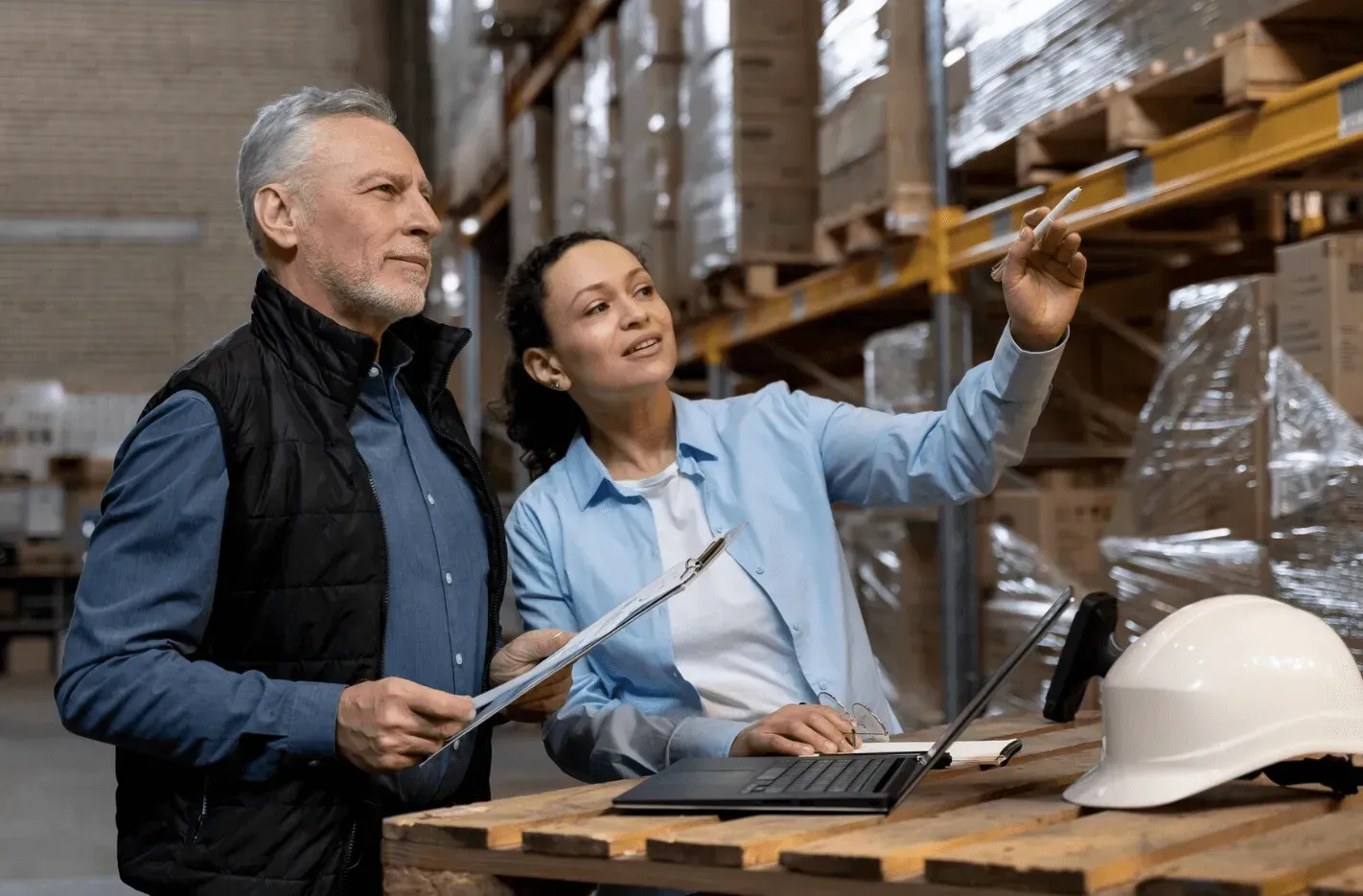
Logistics Operators and Their Role
Logistics operators play a crucial role in international transport. They act as intermediaries between exporting companies and transportation service providers. Their expertise in logistics helps optimize export operations.
Key responsibilities of logistics operators include:
- Transport coordination: Organizing the movement of goods, selecting the most appropriate mode of transport, and managing transfers between different carriers.
- Documentation: Assisting in the preparation of all necessary shipping documents, including customs and other regulatory paperwork required by the destination country.
- Warehousing: Offering temporary storage solutions to ensure products remain in optimal condition before shipment.
Cargo Tracking and Monitoring
Tracking and monitoring cargo are essential to ensure products reach their destination efficiently. With technological advances, companies can now implement systems that allow real-time tracking of the status and location of goods in transit.
Benefits of effective tracking include:
- Visibility: Knowing the exact location of goods at all times allows companies to plan and respond to delays or unexpected changes.
- Risk management: Continuous monitoring helps identify and mitigate potential risks, such as weather disruptions, customs delays, or other logistical problems.
- Improved customer satisfaction: Providing delivery updates enhances communication with clients, resulting in better service and customer loyalty.
Currency Repatriation and Payments
Currency repatriation is a critical aspect of export logistics, allowing companies to recover foreign currency generated from international sales. Proper management ensures financial liquidity in global operations.
Management through Foreign Exchange Intermediaries
Currency repatriation is conducted through authorized foreign exchange intermediaries such as banks or licensed exchange houses. These institutions help convert export earnings into local currency securely and efficiently.
Steps in the repatriation process include:
- Choosing the right intermediary: Select an institution with competitive rates and authorization from the Central Bank of Colombia.
- Document submission: Exporters must submit supporting documentation, such as commercial invoices, sales contracts, and shipping documents.
- Repatriation request: Once the transaction is complete and documentation is in order, a formal request is made to the selected intermediary.
- Operation tracking: It’s vital to maintain records of all transactions to ensure the process meets deadlines and agreed conditions.
Any issue in this process can affect the exporter’s cash flow. External factors such as exchange rate fluctuations and regulatory changes may also impact the outcome. Staying informed and well-advised is essential for effective financial management.
Challenges in Export Logistics in Colombia
Export logistics in Colombia faces several challenges that may hinder international business performance. These issues are often related to the regulatory environment, infrastructure, and key logistical factors.
High Logistics Costs
One of the major obstacles for Colombian exporters is the high cost of logistics. These costs—including transportation, warehousing, and operations—can represent a significant share of business income.
Studies show logistics costs in Colombia reach around 12.6% of total revenue, with transportation accounting for approximately 30.7% of the total.
Poor Infrastructure
Infrastructure is a critical component that directly affects logistics operations. Colombia has long struggled with deficiencies in this area, causing delays and increasing operational expenses.
Road and Port Conditions
Roads in Colombia vary widely in quality, often failing to meet proper standards, leading to delays and wear on cargo vehicles. In addition, key ports such as Cartagena and Buenaventura suffer from congestion and maintenance issues. These conditions reduce the efficiency of export logistics and make it difficult to meet international delivery schedules.
Lack of Multimodal Transport
Another significant challenge is the limited availability of multimodal transport—a logistics approach combining different transportation modes (sea, land, air) for efficiency. The lack of integration between these modes restricts companies’ flexibility to adapt their logistics strategies to international market needs.
Complex Regulations
Colombia’s export regulatory framework is extensive and often complex. Both local and international regulations are rigid and frequently updated, requiring exporters to have a deep understanding of applicable laws. Failing to comply can result in penalties, delays, or loss of access to foreign markets.

Lack of Technology in Logistics Processes
Although some companies in Colombia have begun adopting advanced technologies, most remain behind in terms of digitalization. The lack of tools such as Big Data, inventory management systems, and cargo traceability limits their ability to optimize operations.
Investing in technology is essential to:
- Improve efficiency
- Reduce costs
- Enable informed decision-making in export logistics
Strengths of Colombia's Logistics System
Colombia's logistics system has several strengths that support export processes and help local companies compete in global markets.
Diversity of Exportable Products
Colombia offers a wide range of exportable products, representing major opportunities for businesses:
- Agricultural products: coffee, flowers, bananas, and sugarcane
- Agro-industrial goods: sugarcane derivatives, processed foods
- Manufactured goods: textiles, garments, plastic products
- Luxury goods: jewelry, leather goods, technology
This variety allows companies to specialize and diversify, reducing risk and increasing success in international trade.
Free Trade Agreements
Colombia has signed multiple free trade agreements (FTAs), opening access to international markets. These agreements offer:
- Preferential access to markets with reduced or eliminated tariffs
- Increased competitiveness of Colombian products abroad
- Opportunities to diversify export destinations and reduce dependency
Thanks to these agreements, Colombian companies can more effectively position their products globally.
Growth of Exporting Companies
There has been significant growth in the number of micro, small, and medium enterprises (MSMEs) entering export markets due to:
- Training and education initiatives on international trade
- Access to information and export-related resources
- Strengthening of Colombia’s export-oriented business culture
This trend not only enriches the national economy but also enhances Colombia’s presence in global markets.
Government Support and Guidance from ProColombia
The Colombian government, through ProColombia, plays a critical role in promoting exports through:
- Specialized advisory services for potential exporters
- Training programs on international commerce
- Digital platforms connecting exporters with foreign buyers
- Networking events like international business matchmaking sessions
Such support is vital for enabling Colombian products to enter global markets successfully.
Improvements in International Connectivity
Despite infrastructure challenges, several Colombian cities have made progress in improving international connectivity:
- Airport expansion and modernization for more efficient air transport
- Investments in seaports to enhance foreign trade operations
- Development of road networks to improve access to production and export areas
These improvements make Colombia more attractive for foreign investment and strengthen its role in the global supply chain.
Future Trends in Export Logistics
Future trends in export logistics reflect how companies are adapting to changing global demands. Below are key trends that will shape Colombia’s logistics landscape:
Nearshoring and Trade Opportunities
Nearshoring focuses on relocating suppliers and operations closer to key markets. This strategy can provide Colombia with significant advantages:
- Lower transportation costs
- Improved delivery times
- Greater flexibility in the supply chain
As companies seek to reduce risks associated with distant supply chains, Colombia can position itself as a strategic hub for firms looking to serve nearby markets.
Digitization of Logistics Processes
Digitization is becoming a foundational element in export logistics. It includes the adoption of digital technologies in areas such as:
- Inventory management systems
- Transportation management platforms
- Streamlined communication between suppliers and customers
Use of Big Data and Cargo Traceability
Big Data helps analyze large data sets to make smarter decisions. In logistics, it improves cargo traceability, allowing companies to:
- Monitor shipments in real time
- Identify delays and optimize delivery routes
- Improve customer satisfaction with better delivery updates
Sustainability and Eco-Friendly Practices
The global agenda now emphasizes sustainability. Companies that implement responsible logistics practices not only help the environment but also improve their public image:
- Use of sustainable packaging
- Adoption of cleaner transportation modes
- Resource optimization to reduce carbon footprints
This approach benefits the planet and appeals to environmentally conscious consumers.
Innovation in Transport Infrastructure
Investment in infrastructure will remain key to improving Colombia’s logistics system. Emerging innovations include:
- Projects to upgrade roads and ports
- Integration of advanced technology into transport systems
- Promotion of multimodal transport as an efficient freight movement solution
These initiatives will enhance access to international markets and boost Colombia’s foreign trade capabilities.




